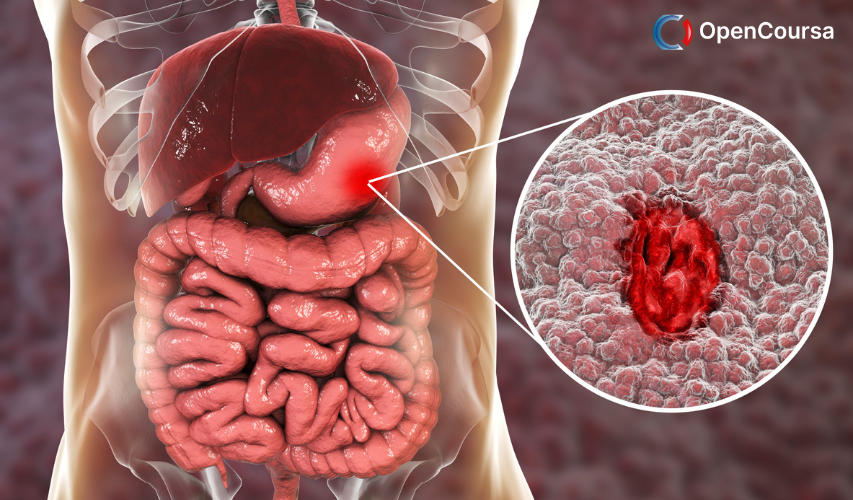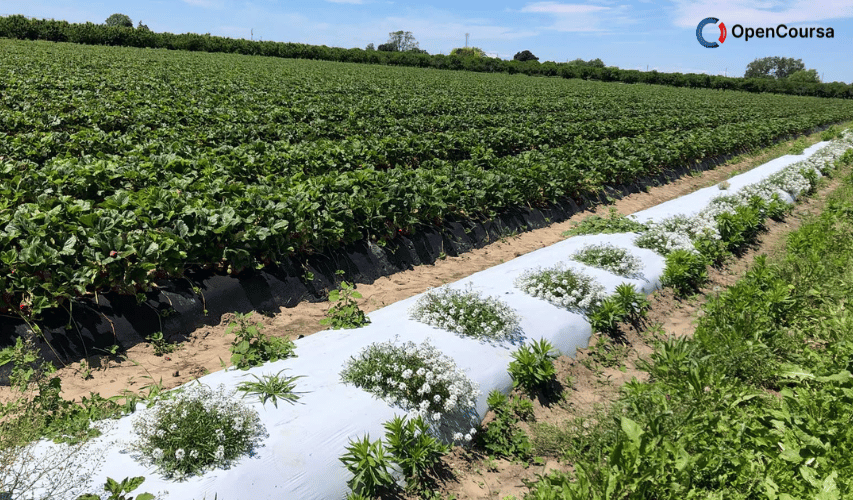Home » Course Layouts » Free Course Layout Udemy
This course examines basic concepts of environmental toxicology, including distribution, cellular penetration, metabolic conversion, and elimination of toxic agents, as well as the fundamental laws governing the interaction of foreign chemicals with biological systems. The course also focuses on the application of these concepts to the understanding and prevention of mortality and morbidity resulting from environmental exposure to toxic substances through a case study format.
0
20
English
English [CC]
- Learn basic syntax that can apply to any language.
- Learn what is a programming language and the basic concepts for beginners.
- Understand what is Javascript in it's truest form.
- Know the basic syntax of Javascript.
- Know some hidden quirks in Javascript.
Description
Syllabus
Course Description
Students examine basic concepts of toxicology as they apply to the effects of environmental agents, e.g. chemicals, metals, on public health. We discuss the distribution, cellular penetration, metabolic conversion, and elimination of toxic agents, as well as the fundamental laws governing the interaction of foreign chemicals with biological systems. Students focus on the application of these concepts to the understanding and prevention of morbidity and mortality resulting from environmental exposures to toxic substances through a case study.Course Objectives
Upon successfully completing this course, students will be able to:- Describe the chemical properties and the biological processes which modulate the toxicokinetics of chemical agents of public health importance
- Explain the significance of biotransformation reactions as a determinant of the toxicokinetic and toxicodynamic activities of chemicals
- Describe molecular, cellular and pathophysiological responses resulting from exposure to chemical agents relevant to human health
- Identify underlying susceptibility factors which contribute to the ability of chemicals to elicit bioeffects which contribute to human disease
- Explain the science underlying testing for the ability of chemicals to elicit adverse human health effects
- Put into perspective the role of toxicology in the risk assessment process
- Discuss in-depth the toxicology of selected organs and agents
Prerequisites
Introduction to Online Learning; a background in college biochemistry and cell biology strongly encouraged.Readings
There is no required text. However, there are assigned readings for each lecture that are accessed through e-reserves. Excellent reference texts for those who want more detailed information are:- Casarett and Doull’s Essentials of Toxicology, 8th (or earlier) edition, C.D. Klaassen and J.B. Watkins III, eds. McGraw Hill Medical, NY, 2013.
- Principles and Methods of Toxicology. Fifth Edition. A. Wallace Hayes (ed). CRC Press, Boca Ratan, 2008. (Older editions also contain basic information that may be helpful.)
Course Requirements
There are two assignments. Specific instructions for each assignment can be found on the Assignments page. Be sure to read them! Assignment 1: Exposure to hazardous air pollutants (HAPs), or air toxics, are of major concern in US communities. The goal of this assignment is for you to prepare a paper on a specific HAP in a community of your choice, its source and potential for causing an adverse health effect. Assignment 2: Each day we are all exposed to environmental chemicals through our diet, personal care products we use, occupation, etc. Your assignment is to become aware of the exposures that you have incurred over the past week or two. Choose one chemical that you have been exposed to and then in the context of what you have learned from the BASIC PRINCIPLES (i.e. exposure, absorption, metabolism, etc.) and APPLIED TOXICOLOGY (i.e. potential for causing adverse effects, the risk from exposure, a biomarker of exposure, etc.) lectures, write an Op/Ed article** on the importance of this chemical and your concerns about exposure to it with regard to potential adverse health effects it may cause.
- Basic principles: factors that affect toxicity
- Toxicokinetics: absorption, distribution, excretion, and biotransformation
- Toxicity testing, dose-response and risk assessment
- Environmental carcinogenesis
- Biomarkers of exposure and susceptibility factors
- Approaches to primary and secondary prevention
- Hepato and renal toxicology: basic principles and specific examples
- Reproductive and developmental toxicology: basic principles and specific examples (e.g., endocrine disruptors, thalidomide)
- Immunotoxicology: basic principles, cutaneous and pulmonary hypersensitivity
- Persistent organic pollutants (POPs) and dioxins
- Bone marrow toxicity: benzene as a case study
- Neurotoxicology
- Metal toxicology: mercury, cadmium
- Ozone, a criteria air pollutant
- Nanoparticle toxicology
Course content is divided into two modules. Within each module are individual lectures, which are presented sequentially and should be completed in that order. Lectures combine audio presentation and slides—just like attending lectures in class. You may return to any previous lecture at any point and review its contents at your convenience. On each lecture's main page, you will find a listing of the section topics, links to the lecture materials, a listing of reading assignments, and links to Web resources. You'll also find any required course work We strongly encourage you to initiate and participate in the Discussion Forum with your fellow students. However, you will not be graded on your participation in these discussions.
This course has two primary goals:
- To introduce you to the underlying principles governing the interactions of foreign chemicals (xenobiotics) with biological systems
- To help you develop an understanding of the kinds of toxic manifestations that can occur as a result of chemical-biological interactions
Health Toxicology is a four-credit course. It consists of three hours of class time equivalent plus six one-hour LiveTalk discussion sessions (LiveTalk sessions not available in JHSPH Open CourseWare). In addition, students are expected to spend at least two hours outside of class for every hour spent in class to complete the readings assigned to each lecture and the two written assignments.
The most recent student evaluations for this course indicate that successfully completing the course involved a range of time commitments, as follows:
- 21% of all students evaluated spent fewer than 11 hours per week
- 52% of all students evaluated spent 11–15 hours per week
- 28% of all students evaluated spent 16–20 hours per week
- 0% of all students evaluated spent more than 20 hours per week
Excellent reference texts for those who want more detailed information are:
- Casarett and Doull’s Essentials of Toxicology, 8th (or earlier) edition, C.D. Klaassen and J.B. Watkins III, eds. McGraw Hill Medical, NY, 2013.
- Principles and Methods of Toxicology. Fifth Edition. A. Wallace Hayes (ed). CRC Press, Boca Ratan, 2008. (Older editions also contain basic information that may be helpful.)
| Session | Topic | Readings |
|---|---|---|
| Lecture 1 | Introduction to Basic Principles | Chap1, pgs 1-3; Chap 2, pp 5-7; Chap 3, pp 21-44 |
| Lecture 2 | Toxicokinetics: Absorption, Distribution, Excretion | Chap 5, pgs57-68; Chap 19, pp 269-270 |
| Lecture 3 | Toxicokinetics: Biotransformation | Chap 6, pp 71-72, 86-87,89,95,96 |
| Lecture 4 | Testing, dose-response, risk assessment | Chapter 2, pp 9-17, Chapter 4, Chapter 8, pp 117-118 |
| Lecture 5 | Environmental carcinogenesis | Chapters 8 & 9, pp 123-129, 132-133 (human population monitoring) |
| Lecture 6 | Biomarkers of exposure, effect and susceptibility factors | Chapter 24, pp 338 |
| Lecture 7 | Approaches to primary and secondary prevention in toxicology | Chapter 3, pp 22-24 |
Course content
-
- Lecture 1: Introduction to Toxicology Principles (Trush) 01:40:00
- Lecture 2: Toxicokinetics: Absorption, Distribution, Excretion (Trust) 01:40:00
- Lecture 3: Toxicokinetics: Biotransformation (Trush) 01:40:00
-
- Lecture 4: Toxicity Testing, Dose Response, risk Assessment (Yager) 04:10:00
- Lecture 5: Environmental Carcinogenesis (Trush) 03:20:00
- Lecture 6: Biomarker of exposure, Effect, and Susceptibility Factors (Trush) 03:00:00
- Lecture 7: Approaches to Primary and Secondary Prevention in Toxicology (Trush) 04:10:00
- Lecture 8: Hepato and Renal Toxicology (Yager) 05:50:00
- Lecture 9: Reproductive and Developmental Toxicology (Yager) 04:10:00
- Lecture 10: Immunotoxicology (Trush) 02:30:00
- Lecture 11: Persistent Organic Pollutants and Dioxins (Trush) 03:00:00
- Lecture 12: Bone Marrow Toxicology: Benezene as a Case Study (Trush) 02:30:00
- Lecture 13: Neurotoxicology (Bressler) 02:30:00
- Lecture 14: Metals – Mercury and Cadmium Toxicity (Culotta) 03:20:00
- Lecture 15: Ozone: A Criteria Pollutant (Trush) 02:20:00
- Lecture 16: Nanotoxicology (Trush) 02:20:00
N.A
- 5 stars0
- 4 stars0
- 3 stars0
- 2 stars0
- 1 stars0
No Reviews found for this course.










